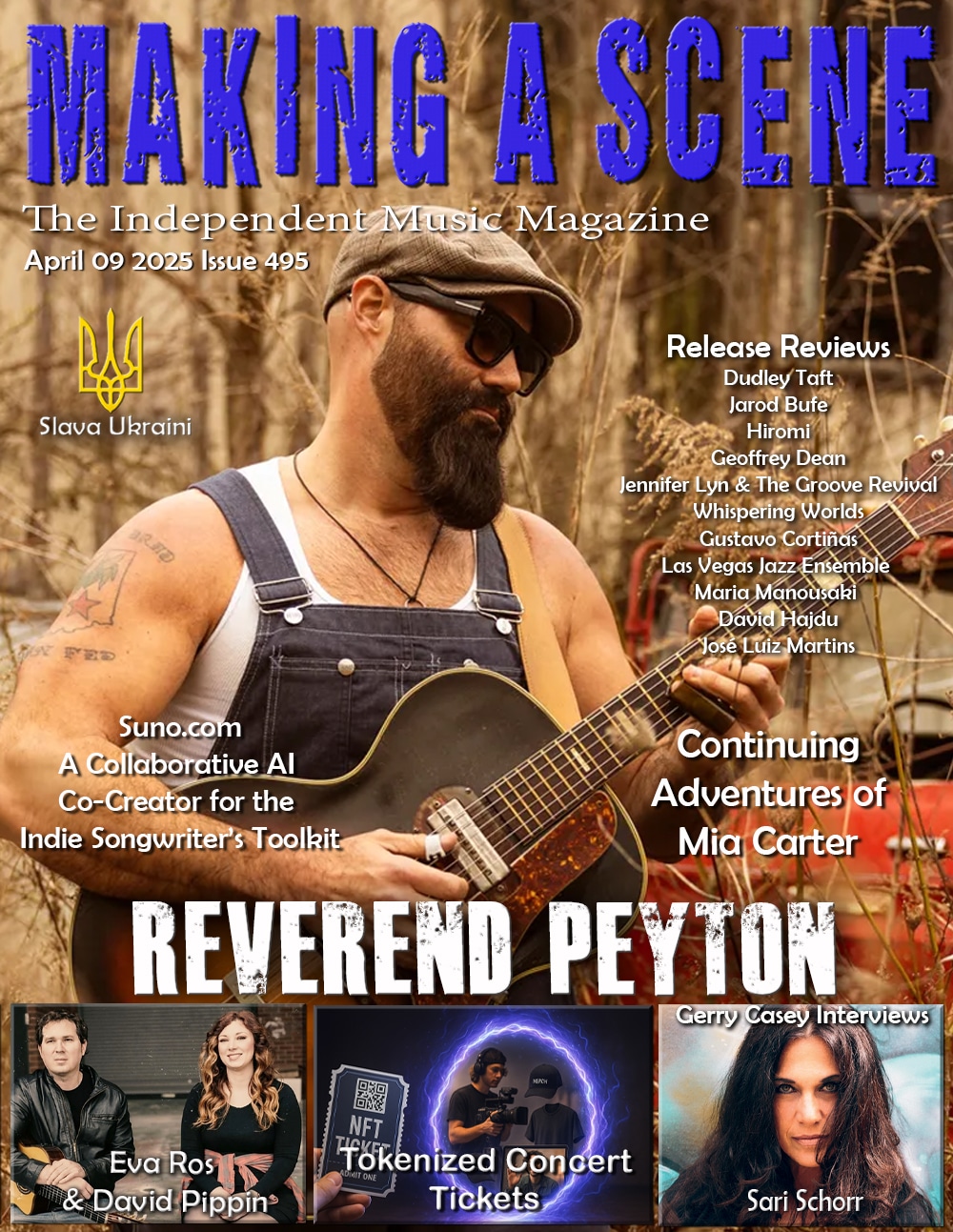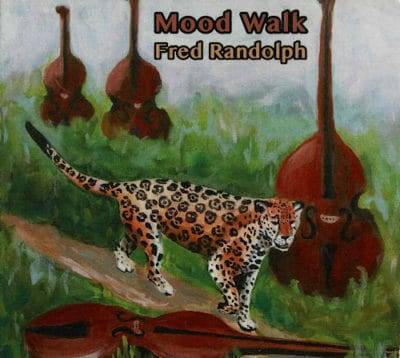Fred Randolph Mood Walk
Fred Randolph
Mood Walk
Creative Spirit
The picturesque jaguar prowling down a path lined with upright basses could connote many things – beauty, power, ferocity, and boundless energy, to name just a few. Unfortunately, though, most will likely access bassist/composer/bandleader Fred Randolph’s fourth album, Mood Walk digitally, and will totally miss the provocative image which also conjures up nimbleness, and a roaming spirit. All the adjectives apply to this mix of multi-cultural, straight-ahead but rather eclectic jazz. Mostly Randolph leads a core quintet of Erik Jekabson (trumpet, flugelhorn), Sheldon Brown (tenor sax, flute), Greg Wyser-Pratte (drums), and Dan Zemelman (piano). Greg Sankovich guests on keyboards and organ on four selections with Silvestre Martinez (percussion) on four, Brian Rice (percussion) for two and Dillon Vado (vibes) on “Unaware.”
Randolph composed all 11 of these tunes, inspired by listening to the music of many others. The album opens with “On the Upside,” inspired by the always energetic Clifford Brown that features aggressive soloing from the front line horns. “Unaware,” with the vibes and Brown’s dazzling flute, was inspired by Chick Corea. “T-Bone Slide” is not inspired by T-Bone Walker but does have a bluesy R&B feel, influenced by drummer Bernard Purdie’s playing, especially in Steely Dan. Brown unleashes a blistering tenor solo and Sankovich is on the Rhodes with abandon before Randolph enters with his own lyrical electric bass solo.
Interestingly, listening to David Crosby’s latest album inspired the ballad “Strange Game,” which about the music business, again featuring flute and several soothing ensemble sections. The title track begins with drums and moves into a bluesy Art Blakey and the Jazz Messengers direction. Brown on tenor, Jekabson on trumpet, Zemmelman on piano, Randolph on upright bass, and back to Wyser-Pratte on drums complete a procession of soloists before the ensemble rejoins the theme. Randolph, as on prior albums, shows a proclivity for Latin jazz with “Knowing” featuring impassioned solos from the horns and, of course, percussion and drums.
Randolph’s catalyst for the also Latin-styled “Mr. Now” was listening to Coltrane Plays the Blues and he moves from that hallowed ground to saluting Todd Rundgren in the soulful “Todd’s Idea,” which features Sankovich on old school Wurlitzer and some of Jekabson’s best trumpet work. The rhythms in the spirited “Nouveau Monde” are derived from the Congolese pattern called Ndombolo and Brown bursts out with yet another potent tenor onslaught, before the rather surprising organ entrance. “Meadows” is a loose Latin waltz styled after Brazilian composer Guinga and it brings the welcome calmness after its fiery predecessor with Brown again on gorgeous flute while Randolph deftly plucks his upright and Zemelman caresses the ivories. It’s as if that’s a “catch your breath” moment before they turn up the intensity with the closing “Funky N.O. Thing” where, appropriately, each soloist takes a turn, forming a bookend to the blistering opener.
Oh, the cover art was clearly intentional. Randolph has always loved all those adjectives associated with Jaguars, who had spiritual significance in Pre-Columbian, Meso-American cultures and had visual artist Julie Ann Acconero create the artwork. Often this tight band comprised of inventive soloists, mirrors those agile, awe-inspiring athletic movements of the jaguar. This album just moves along so briskly (even at 70 minutes) into so many interesting places that it’s a journey one does not want to end. Fortunately, we can repeat it as many times as we like, which for most, like this writer, will be several.
- Jim Hynes
Discover more from Making A Scene!
Subscribe to get the latest posts sent to your email.














































